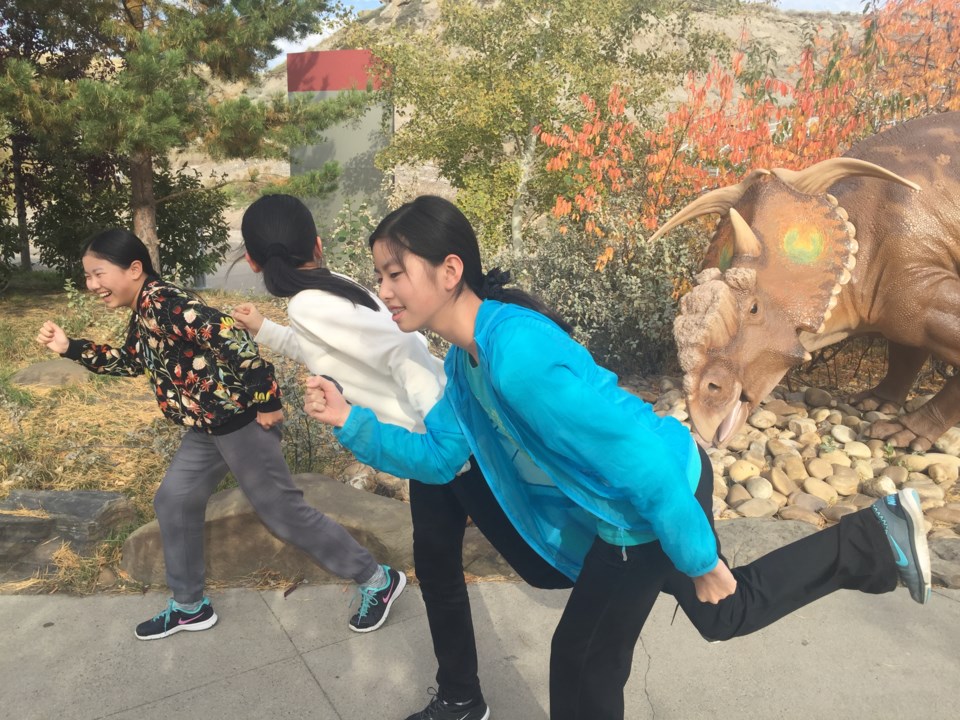It’s one thing to learn about dinosaurs and indigenous history in the classroom. But head out into the field, and the learning takes on a whole new dimension.
That’s what the two Grade 6 and 7 classes at Errington elementary discovered in September when they embarked on their Alberta Experience. Flying into Calgary, they spent four days touring a series of sites including Heads Smashed in Buffalo Jump, the Badlands, Royal Tyrell Museum in Drumheller, the Glenbow Museum and the Calgary Zoo.
“The kids absolutely loved it,” said Ann Tolley, a teacher at Errington Elementary.
“We’ve got a student population whose families do a lot of international travel, but a lot of the children hadn’t seen other parts of Canada, and the learning they experienced was incredible.”
During their time in Alberta the students participated in workshops, handled fossils, toured live archaeological digs and bonded with their classmates and teachers.
“The families of the interpreters we met at Head Smashed in Buffalo Jump participated in the film we saw and they could answer any question the kids asked,” she continued.
Benson Ni, an 11-year-old student in Grade 7, was awed by the site.
“We met an actual Blackfoot tribe member, and learned how to hunt like a Blackfoot, what tools they used and how they made clothing. It was great,” he said.
This was also the trip highlight for his classmate Kaitlin Ng, 12.
“You get to see the artifacts, learn how the Blackfoot tribe hunted buffalo and learn about the buffalo,” she said.
“It was fun going with my friends.”
Isabella Wong, another Grade 7 student, loved the Royal Tyrrell Museum.
“I’d never been to a dinosaur museum before and it was cool looking at the fossils and dinosaur bones,” she said. “I learned that dinosaurs have been extinct for a really long time.”
The Alberta trips were designed around the new B.C. curriculum’s emphasis on learning through real-world situations and hands-on experience.
Students learned about evolution, natural selection, extinction, the scientific process using fossil records and geological dating, the earth changing over time, human interaction with the environment and aboriginal perspectives.



